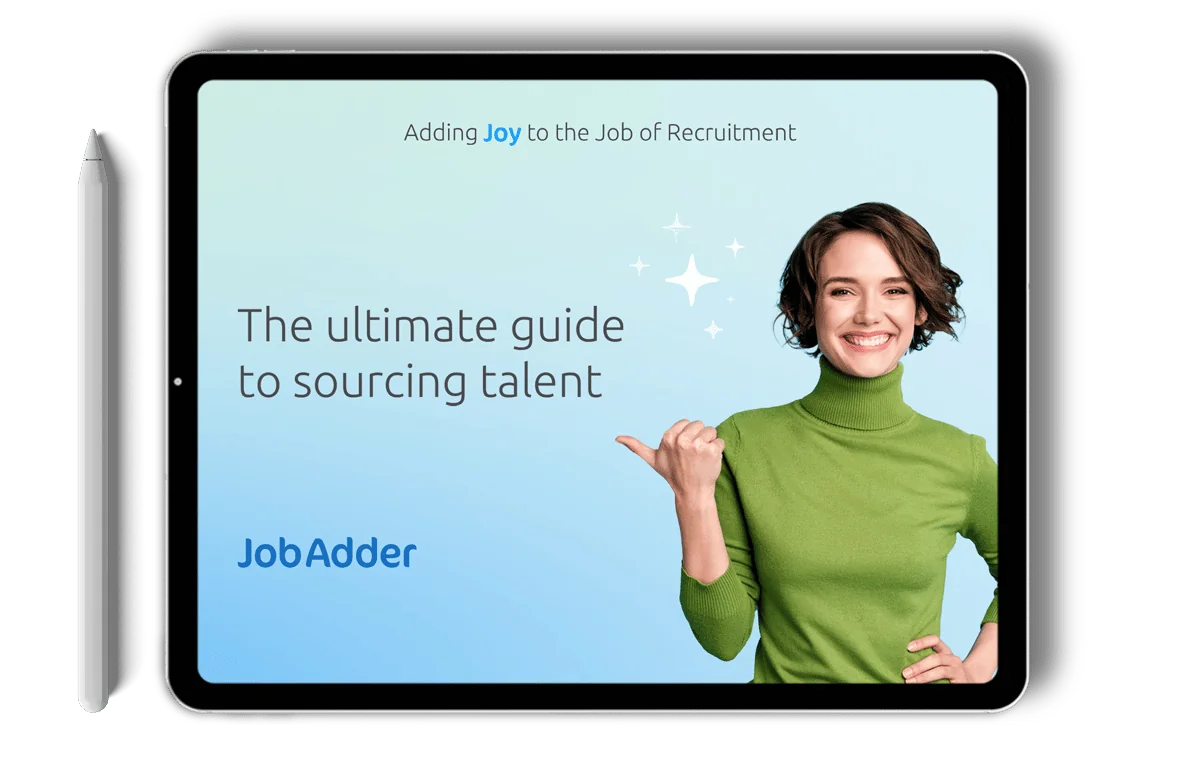Hiring the top talent for your company means having a well-organised and comprehensive hiring process that’s designed to attract the best candidates for the job.
Small business owners and new agencies hiring their first employees may not know where to start.
If you’re not getting as many applications as you’d like, or the right people aren’t applying, you might find some of the below strategies helpful.
FREE DOWNLOAD: The ultimate guide to sourcing talent
Make sure you have all the legal paperwork
Before getting into how to hire your first employees, companies first need to take care of some legal requirements to prepare for advertising a job opening and interviewing applicants.
Applying for an Employer Identification Number (EIN) or other relevant tax file number
Business owners can apply for an Employee Identification Number online if the business is formed inside the US. In Australia, you’ll need to apply for an Australian Business Number (ABN), while in the UK you’ll need a company tax number, otherwise known as a UTR.
Establishing an employee payroll and tax model
If your business is hiring employees, it will need a payroll system to pay those employees and transfer funds for payroll taxes. New employees must complete the relevant tax forms not long after hiring.
Looking into worker’s compensation insurance
Many countries and states require businesses with at least one employee to buy worker’s compensation insurance in case of on-the-job injuries. Worker’s comp insurance provides for an employee’s care and compensation after an injury at work.
Complying with occupational health and safety labour laws
Compliance with labour laws will keep workers safe and prevent a business from facing fines for violations. In the US, check OSHA’s website for labour laws specific to your business.
Do your prep
Before writing a job advertisement and interviewing job candidates, business owners must also prepare by meeting some non-legal requirements for hiring employees. Some of these steps include:
Writing an employee handbook
New employees want to know more about processes and policies. Writing an employee handbook that spells out benefits, culture and when salaries are paid is necessary.
Defining your hiring process
Next, hiring managers will need to start thinking about the company’s hiring capabilities. Who can lead the search? Decide where you’ll find employees and what your ideal candidate looks like on paper.
Think about adding background checks
Many companies do background checks to avoid making a bad hire. These background checks can now be automated through a range of integrations with your JobAdder account.
Need help with finding the right talent? Download our ultimate guide to sourcing talent today

Starting your search
Once a business has completed this preparation, the search for job candidates can begin. Start the search off right by following these steps.
1. Clearly define the new role
To hire the best person for a position, hiring managers must first define the job to be filled and the skills it will require. Discuss the new position with team members to learn more about what should be included in the description. If the time for training is limited, you’ll want to hire an experienced applicant who is ready to go on their first day.
2. Write a great job title and description
A clear job title and description will attract applicants with the skills required. When writing the job description, include skills required, core competencies, details about salary and benefits and information on the culture and values of the company. Write concisely, avoid jargon and keep the job description to about 300 to 600 words.
3. Be strategic about your job posting
The secret to how to find good employees is placing advertisements strategically. Advertise your opening where your ideal job candidates are looking for opportunities. This will make the best use of your time and resources.
Online job boards and social media are likely spots to post your company’s job opening, but you can also share your job opening with universities, career fairs and city jobs programs. Also, consider where similar firms are advertising jobs with success.
Linkedin, Indeed, ZipRecruiter and Glassdoor are often scanned by job hunters, so those online job boards should be considered for job advertisements. If you want more info on how to write a great job ad, check out our blog.
4. Utilise employee referrals if possible
Although hiring managers ask all the questions during an interview, top talent are also determining whether your company will be a good fit for them. Using employee referrals will show job seekers that employees like working there and are willing to recommend your company. This also empowers your employees to play a role in finding their future coworkers.
Evaluating job candidates
What’s the best way to find employees in a pool of candidates? Once you begin seeing applications roll in for open positions, you’ll evaluate the candidates. To carefully evaluate job candidates, create a system for evaluating job applicants.
1. Fine-tune your candidate review process
While you want the review process to move along quickly, hiring managers should take the time needed to review resumes, cover letters and other application documents for eligibility. Experience, skills and references should be considered.
2. Design a clear and informative interview process
Knowing how to conduct effective interviews is a key skill in hiring. Job interviews are an opportunity to get to know job applicants better and learn more about their skills and abilities.
During the interview, ask about applicants’ work experience, including education, internships and past roles. Ask questions about career goals, which may give clues as to how candidates would fit into the company and its culture.
Legally, interviewers should not ask about age, race, gender, ethnicity, nationality, disability, religion or relationship status so please ensure that all hiring managers and recruiters are aware of this.
You can also draw out behavioural information by employing the S.T.A.R. interview method. This entails asking questions about how candidates handle different situations, followed by their actions and the overall outcome.
3. Follow up with candidates
Following up with candidates after the job interview will keep top talent interested. Job candidates who don’t hear from companies after the job interview might accept other job offers instead. Once a position is filled, letting other job candidates know is simple professional courtesy.
4. Send the offer letter
After the interview process, talk with your team about which candidate would be best for the position. Once the ideal candidate has been identified, the hiring manager should write and send an offer letter, which is a written job offer that details benefits, the start date and any other details or agreements.
Onboarding
Knowing how to hire employees doesn’t stop with the job offer. To give your new employee the best start, an onboarding process should be included. Employees who work from home will need a remote onboarding guide. The onboarding process should include:
- An orientation, including information about company processes, a workplace tour, an explanation of benefits and performance expectations.
- Information about when training will start and end, and what it will entail. Share related materials during the onboarding process.
- Clear expectations, so new employees will know what’s expected of them in the new position.
- A mentor to help new employees meet coworkers and fit into the company culture.
Streamline your hiring with JobAdder
One of the best ways to find employees is to invest in JobAdder for your business. From seamless job posting to AI and skill matching candidates with jobs, JobAdder can help you kickstart your search for new employees and find the best talent for your business. Contact our friendly team to find out more.





